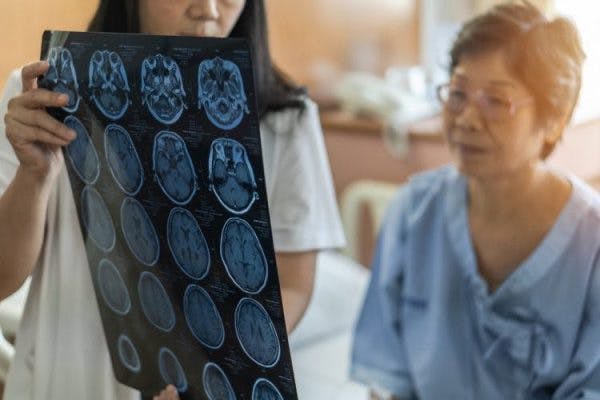Is there a link between TBI and autism? Can a brain injury cause autism?
While many symptoms of TBI and autism overlap, there is currently no evidence to suggest that a brain injury causes an increased risk of autism. However, because the two conditions affect brain functioning, some of the interventions used to manage autism may also be helpful for TBI patients.
This article discusses the similarities and differences between TBI and Autism and how treatments for autism can help TBI patients increase their social functioning.
What is Autism?
Autism spectrum disorder (ASD) is a neurodevelopmental disorder that affects how a person perceives and communicates with others. There is a wide range of symptoms and severity within the spectrum, and the disorder now includes conditions that used to be considered separate, such as Asperger’s syndrome.
Asperger’s syndrome is generally thought to be at the mild end of the spectrum. Most children with ASD show symptoms within the first year, though some do not develop problems until about the age of 2.
Some of the early signs of autism include:
- Does not respond to their name and seems to not hear you.
- Abnormal body posturing or facial expressions.
- Resists cuddling and seems to prefer playing alone.
- Has poor eye contact and lacks facial expressions.
- Doesn’t speak or has delayed speech.
- Speaks with an abnormal tone or rhythm.
Many on the spectrum have a heightened sensitivity to stimulation but a dulled sense of pain. Therefore, they may perform behaviors that cause self-harm, such as biting or head-banging.
There is no single, identifiable cause of autism spectrum disorder, although genetics seem to play a major role. No reliable studies have shown a link between vaccines and autism.
Although there is no cure for autism, early intervention can help many people on the spectrum live happy, productive lives.
Can Brain Injury Cause Autism in Adults?
Autism (ASD), by definition, is a developmental condition, which means it is present from birth. Therefore, a brain injury does not cause autism in adulthood. To be diagnosed with autism, a child would have to miss certain common milestones, such as:
- Smiling by around 6 months.
- Mimicking sounds and facial expressions by 9 months.
- Babbling and cooing by 12 months.
Other early signs include unusual reactions to sounds, smells, and lights.
However, while brain injury does not cause ASD itself, the two do share similar attributes. For example, both populations experience gastrointestinal problems, learning difficulties, seizures, and sensory processing disruption. Research is beginning to reveal a relationship between gut microflora and healthy brain functioning. TBI and Autism both affect the “brain-gut-microbiome axis.”
TBI appears to cause changes in the abundance of bacteria in the gut as well as altered concentrations of specific metabolites. The altered gut-brain axis in TBI and Autism may explain why there are similarities between people with brain injury and those with ASD.
Similarities Between TBI and Autism
TBI and Autism share many of the same characteristics. They both cause deficits in social judgments and communication skills and problems regulating behavior. Other similarities between brain injury and autism include:
- Anxiety
- Balance and coordination problems
- Reduced muscle strength
- Impaired executive function
- Seizures
- Language disorders
- Attention problems
- Difficulty interpreting body language
- Sensory processing disorders
There are also several differences between TBI and autism. For example, a frontal lobe injury often disrupts empathy and increases self-centered behavior. However, contrary to popular stereotypes, most people with autism do not lack empathy. They simply struggle to express or interpret social norms.
Because the root causes for autism and brain injury are decreased neurological functioning, the interventions used to treat autism can be helpful for brain injury patients as well, and vice versa.
Treatments for Autism and Brain Injury
There are many treatments aimed at minimizing the effects of autism that can help people with TBI improve their social skills and behavior. The following are a few of the best therapies used to treat both TBI and autism:
Applied Behavioral Analysis
Applied behavioral analysis is a popular intervention for ASD. It’s also been used successfully with brain injury patients with similar issues. ABA involves breaking down skills into component parts and helping patients learn them through repetition and reinforcement. It also teaches patients how to avoid unwanted behavior such as emotional outbursts.
Although children with ASD may learn and respond to ABA training, further research is needed to conclude whether it is the best practice for the developing brain which depends on a variety of stimuli to develop completely. This therapy is best suited for patients with severe cognitive disabilities or for young children.
Cognitive-Behavioral Therapy
This therapy is best suited for TBI survivors or people with autism who don’t have severe cognitive difficulties, but who still have trouble controlling their emotions and behavior. The goal of cognitive-behavioral therapy is to help a person understand their actions and find out what triggers them.
For example, if the person tends to focus on negative thoughts and emotions, and this leads them to get easily upset, becoming aware of this helps the person control their behavior. Or maybe it’s something as simple as hunger that triggers anger or other socially inappropriate behavior. Then the person can practice managing the trigger differently.
Cognitive-Behavioral therapy helps the patient identify their triggers, and learn ways to either avoid a trigger or cope with it healthily. With practice and reinforcement, the brain can adapt to help the person manage better.
Insight-Oriented Psychotherapy
Insight-oriented psychotherapy (IOP) is similar to CBT, but instead of focusing on triggers it focuses on negative beliefs. The beliefs IOP addresses aren’t necessarily conscious, but they shape how an individual with a TBI may see the world. As a result, they affect behavior.
For example, a therapist might help a patient discover that they believe people don’t like them because of their brain injury, which makes them more hostile to others. Once the person discovers these beliefs, the therapist will teach them ways to replace negative thoughts with positive ones.
Combining insight therapy with behavioral therapy is often the most effective approach.
Relationship Development Intervention
This therapy focuses on helping patients establish meaningful relationships, something both autism patients and TBI survivors need. It is not uncommon for TBI and Autism to lead to social isolation and inactivity which can have negative long-term consequences for both groups.
One of the skills this therapy focuses on is motivation to engage with others. The therapist works on building up the skills necessary to accomplish this such as sustained eye contact and back-and-forth communication. It is common for parents, family members, and caregivers to take part in this therapy as well. In general, social rehabilitation after TBI can facilitate healthier outcomes for TBI.
TBI and Autism: Key Points
Autism and brain injury share many similar symptoms. Both can impair social behavior and communication, and both lead to emotional outbursts or destructive behaviors.
Because TBI and Autism are neurological malfunctions of the brain, the interventions used for one may also benefit the other. Therefore, TBI patients, especially those with executive dysfunctions, might consider trying therapies that have been traditionally used for autism, such as behavioral therapies and social rehabilitation programs.
We hope this article has helped you learn more about the relationship between TBI and Autism.









